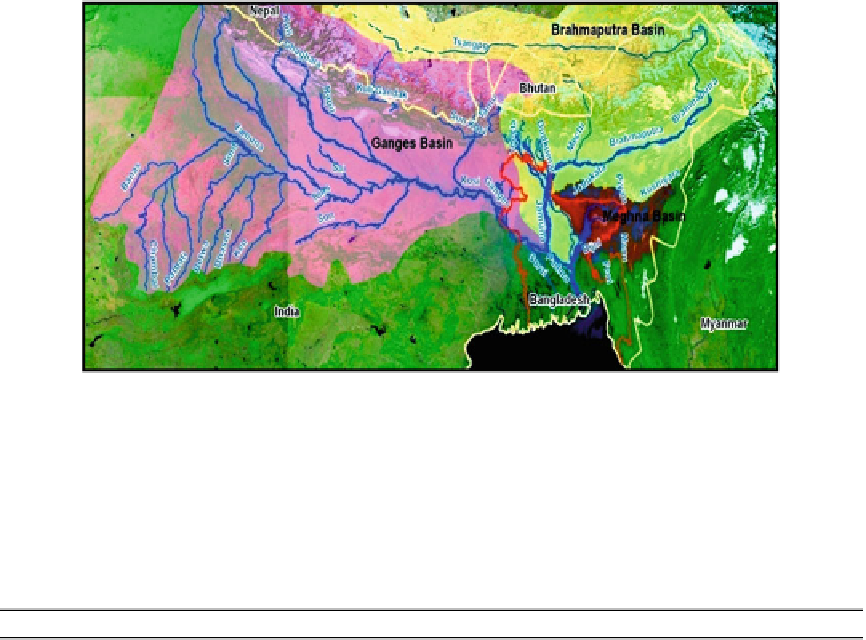Environmental Engineering Reference
In-Depth Information
Fig. 2.15
Location of Ganges, Brahmaputra and Meghna basins in India, Bangladesh and Myanmar, respectively
Table 2.7
Comparative account of Ganges, Brahmaputra and Meghna basins
Features
Ganges basin
Brahmaputra/Jamuna basin
Meghna basin
Total
Catchments area (km
2
)
1,000,000
573,000
77,000
1,650,000
Mean annual rainfall (mm)
1,200
1,900
4,900
8,000
Mean annual discharge (cumec)
11,000
20,000
4,600
35,600
Maximum discharge (cumec)
78,000
100,000
20,000
198,000
Sediment transport (m ton/year)
550
590
13
1,153
Source
Ganges basin. However, the abundance of salt
marsh grass in all these estuaries indicates that
unlike seagrasses (which are primarily
dependent on transparency), salt marsh grass
can thrive well in turbid water.
2.
Coastal
seagrass and salt marsh grass habitats
are dominated by physical disturbance caused
by periodic events such as cyclones, storms and
fl
as in the Great Barrier Reef lagoon where the
transparency is very high.
4.
Reef
seagrasses are limited by substrate type
and shelter from waves. Most coral reef
waters and sediments also have very limited
nutrients available for seagrass growth.
2.1.4 Mangroves
oods in the Hervey Bay area
have caused the temporary loss of the extensive
seagrass meadows and the subsequent death of
hundreds of dugong. Also strong currents that
cause erosion damage the seagrass and salt
marsh grass patches (Fig.
2.16
).
3.
Deep-water
seagrass meadows are limited in
their growth due to minimum availability of
light. Sunlight is
oods. Major
fl
Along the edges of continents, around islands,
wherever land meets sea, seashores are found. At
nearly 440,000 km,
the coastline across the
'
Earth
s runs over a staggering distance and can
encircle the equator almost 13 times over. These
miles and miles of shoreline have fascinating
diversity and are not the same everywhere. On the
coasts along the tropics on either side of the
equator are the regions where mangroves
ltered by the water column
with less light reaching the bottom in deeper
water. As a result, seagrass growth is limited
by the clarity of the sea water above it.
Seagrasses can grow even at a depth of 60 m
ourish.
These areas are warm, humid and swampy inter-
tidal zones where tropical rivers
fl
fl
ow into the sea.






